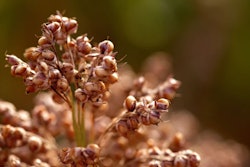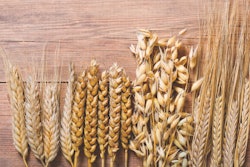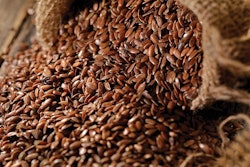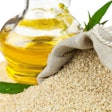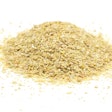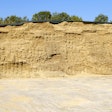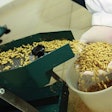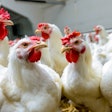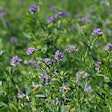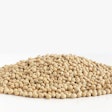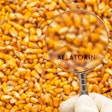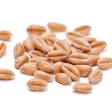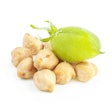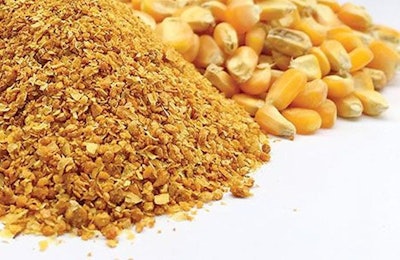
Cannot be used as a main protein source, even with the addition of certain synthetic amino acids.
First, let us make clear that there is no gluten in corn. Gluten is the name given to certain structural proteins in wheat. In broader terms, the medical scientific community refers to “gluten” as certain proteins that can trigger celiac disease, and these proteins can be found in wheat, rye, triticale, barley, and oats, but not in corn. In other words, corn is gluten free. Thus, the term corn gluten is a misnomer at best, perhaps because of a lack of a better term.
Corn gluten feed can be thought of as a product very similar to de-oiled dried distillers grains with solubles (DDGS). Both ingredients are the co-products of starch removal, and both contain everything found in corn but the starch. In the case of DDGS, the starch is converted into ethanol where, in the case of corn gluten, the starch is retrieved to be used mainly in foods. Corn gluten products contain very little oil because the germ, which contains most of the oil in the corn kernel, is removed early in the process to produce corn oil. Something similar is done to DDGS with many products containing much less than 10% oil that was found in early DDGS products.
The co-products of corn wet milling to retrieve native starch are marketed in two different forms:
- Corn gluten feed with about 20% crude protein and 10% fiber (contains all the bran)
- Corn gluten meal with 40% or 60% crude protein with either half or no bran added
For this discussion, we focus on corn gluten feed because it is the least expensive product, and today the focus is to find alternatives to more expensive protein sources. So, we will examine the issues that characterize corn gluten feed as a protein source for broilers.
Apart from an excess of leucine (also common in DDGS) that can antagonize other branch-chain amino acids (valine and isoleucine), the protein of corn gluten feed is rich in methionine and limiting in lysine. So, it cannot be used as a main protein source, but only as a secondary one, even with the addition of certain synthetic amino acids. The second issue with this ingredient is that it contains all the pigments found in corn but in concentrated form. So, when fed along with regular corn, the pigmentation of broiler skin and legs will be intensified. Of course, using corn gluten feed and DDGS along with corn will maximize such effect. Nevertheless, all other things considered, this intense pigmentation can be a desirable effect in some markets, or the opposite in others.
The major issue with corn gluten feed is its low energy content (1,800 kcal/kg AMEn) that is associated with a high concentration of fiber (7.5%). These two figures determine the level of inclusion, which for broilers is best kept between 5% and 15%, easily arranged as 5%, 10%, and 15% in the starter, grower and finisher feeds, respectively. Older birds can handle diets with more fiber easier as they can adjust their feed intake better to account for diets with less energy. Higher levels of inclusion cannot be excluded, but for such work, it is best to consult with a nutritionist experienced on formulating feeds with agro-industrial products.

